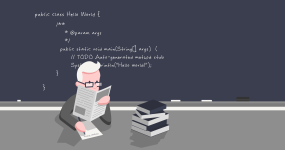
Kevin Resch, acting director of the Institute for Quantum Computing, overlooks a light experiment in the quantum optics lab. – Vanessa Tignanelli,Record staff

Martin Laforest, head of scientific outreach at the Institute for Quantum Computing, expects to see quantum supremacy within five years. – Vanessa Tignanelli,Record staff

Martin Laforest, head of scientific outreach at IQC, reveals a super conducting train, which uses magnets and a crystal cooled by liquid nitrogen to show super conducting properties of quantum mechanics. – Vanessa Tignanelli,Record staff

Martin Laforest, head of scientific outreach at IQC, reveals a super conducting train, which uses magnets and a crystal cooled by liquid nitrogen to show super conducting properties of quantum mechanics. – Vanessa Tignanelli,Record staff
1 / 4
WATERLOO — Kevin Resch is searching for the Holy Grail of high technology in the Institute for Quantum Computing at the University of Waterloo.
As the institute prepares to mark its 15th anniversary in November, Resch is the acting director — and part of an elite group of scientists working to bring the promise of quantum computers to commerce, medicine and communications.
Quantum computers are the next generation of supercomputers that harness the properties and movements of atomic particles — atoms, electrons, photons, ions — to process and store information.
Resch and his colleagues are working on things that win Nobel Prizes and spur trillions of dollars in economic development.
If that sounds like an exaggeration, consider this — a quantum sensor will be able to detect a single cancerous cell in the human body.
The first quantum revolution came out of an area of physics called particle-wave duality that led to the invention of transistors and lasers.
Both are at the foundation of the information age. Lasers send pulses of light containing information through the fibre-optic cables of the internet. Transistors attached to circuit boards are the technical hearts of traditional computers.
The second quantum revolution arrives when someone builds a quantum computer that has 50 quantum bits, or qubits, of processing power. That milestone heralds what scientists call quantum supremacy — the point at which quantum computers can do things classical computers cannot.
BlackBerry inventor Mike Lazaridis, the University of Waterloo and the provincial and federal governments invested hundreds of millions of dollars into the institute. Since it started in 2002, Lazaridis alone contributed more than $100 million. The building is named the Mike & Ophelia Lazaridis Quantum-Nano Centre.
They are betting it will produce the world’s first practical quantum computer that will spark the next industrial-super cycle. Quantum computers herald change many times bigger than the personal-computing revolution launched by Steve Jobs with the Macintosh in 1984, or the rise of the searchable internet in 1995.
[“Source-therecord”]
| M | T | W | T | F | S | S |
|---|---|---|---|---|---|---|
| 1 | 2 | 3 | 4 | 5 | 6 | 7 |
| 8 | 9 | 10 | 11 | 12 | 13 | 14 |
| 15 | 16 | 17 | 18 | 19 | 20 | 21 |
| 22 | 23 | 24 | 25 | 26 | 27 | 28 |
| 29 | 30 | |||||























